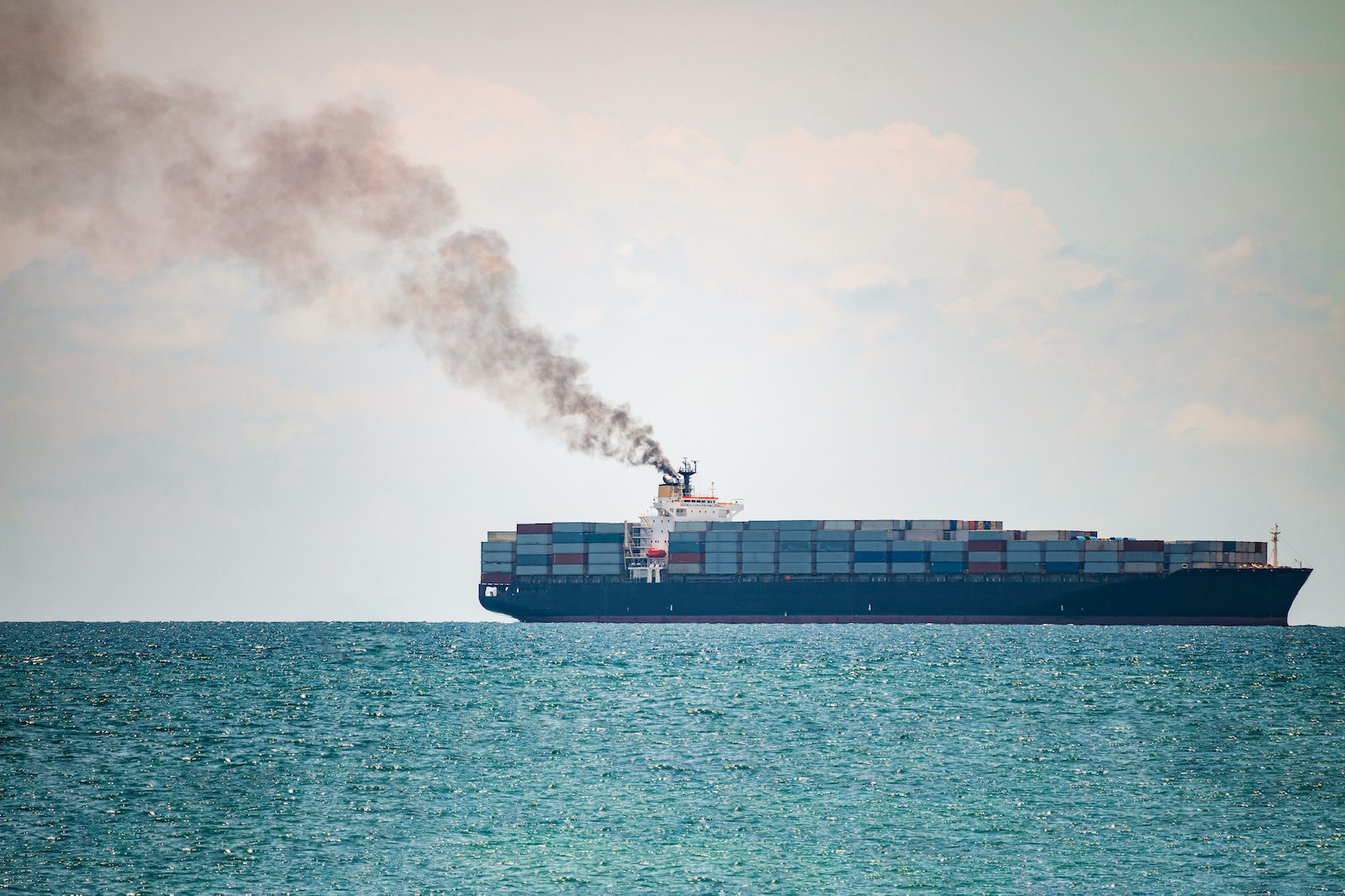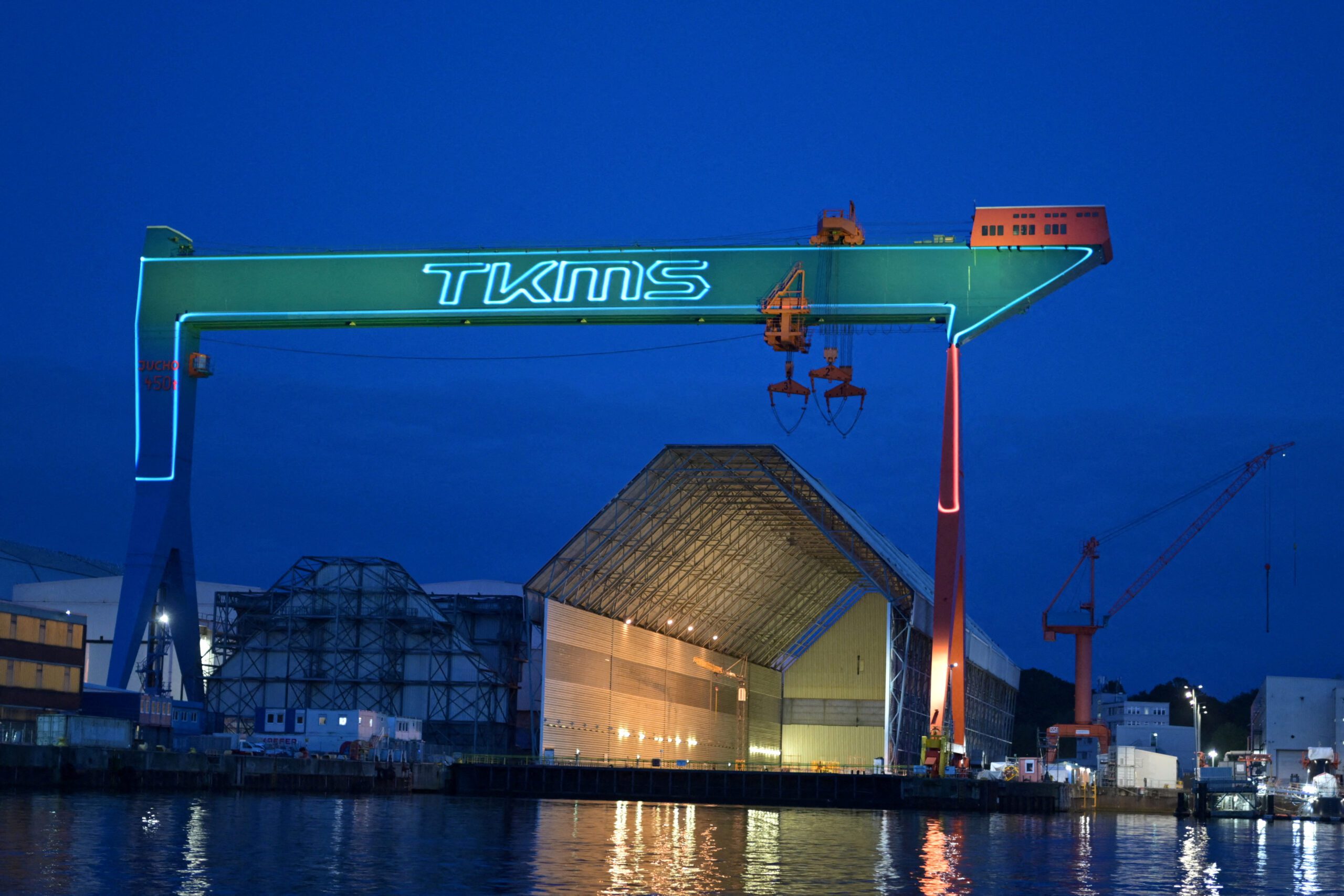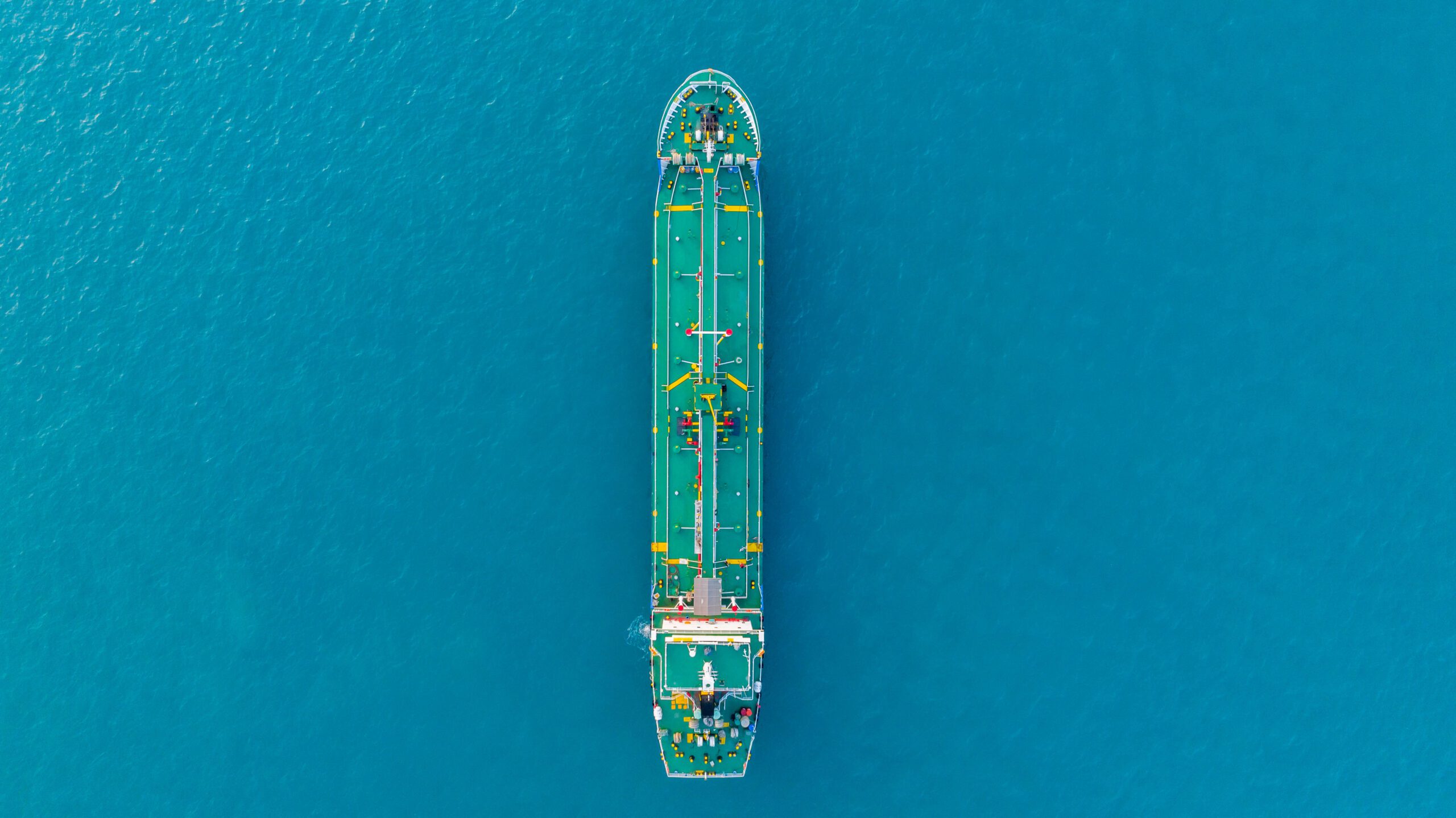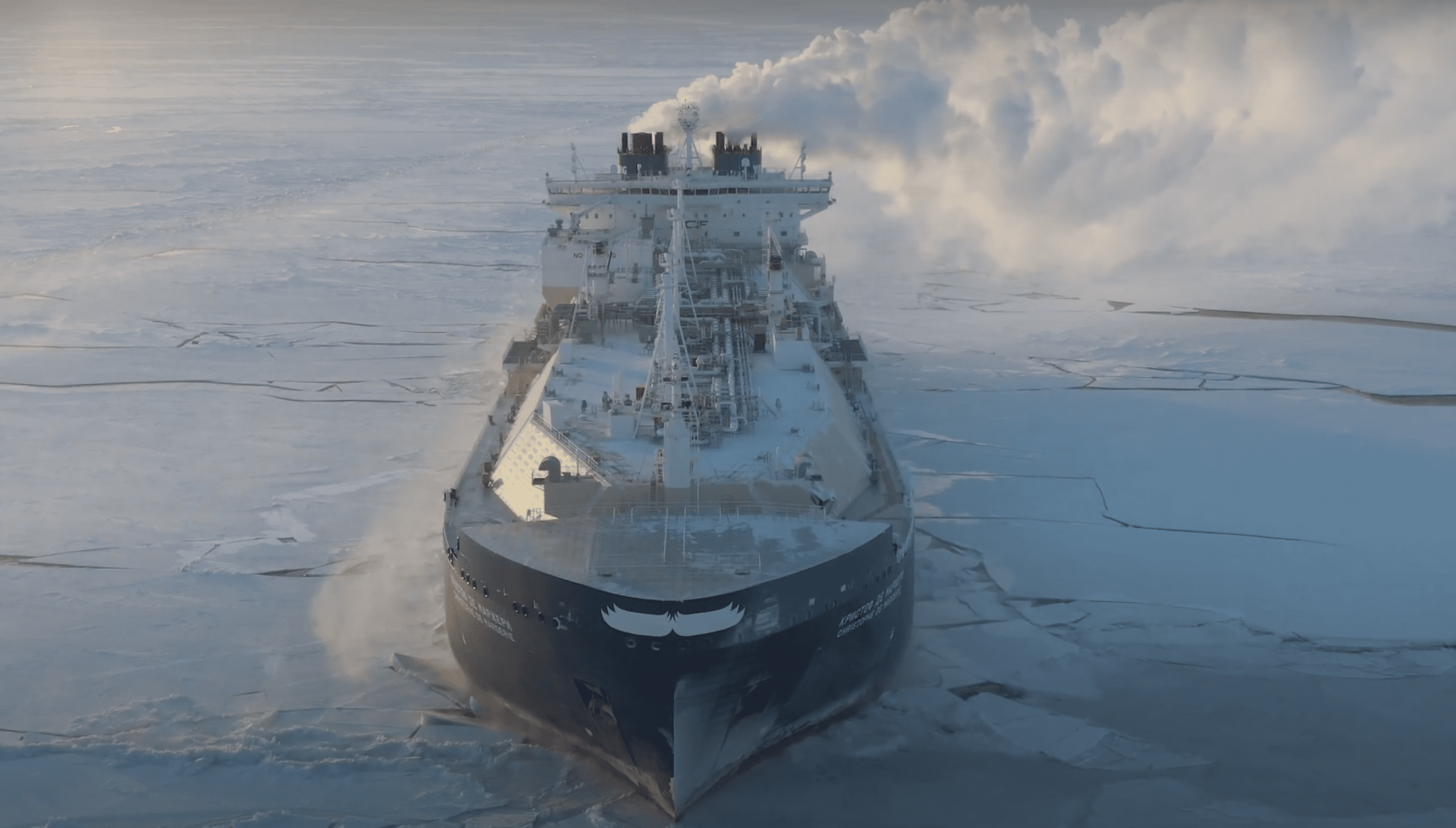By William Ralston (Bloomberg) —
Singapore-based BW LPG goes about its business differently than many shipowners. If during a vessel’s passage it becomes clear that a berth won’t be free upon arrival at port, the ship will simply slow down so it shows up when there’s room.
By not being forced to wait for days or weeks at a time, fuel is saved and emissions avoided—since these massive ships can’t just power down at anchor. Last year, the strategy equated to more than 500 metric tons of unburned fuel, according to BW Vice President and Head of Operations Prodyut Banerjee.
Known as “virtual arrivals,” this method of smarter shipping has been around for a while. But as the climate crisis accelerates and fossil-fuel dependent sectors like airlines and shipping struggle to shrink their carbon footprint, its popularity—as well as that of other greener strategies—is rising.
International cargo and container shipping is responsible for 3% of global greenhouse gas emissions—roughly one billion metric tons of carbon dioxide annually, equal to all of Japan’s emissions. Despite this, the industry has made few inroads toward decarbonization, a fact regularly attributed to the difficulty of finding alternative ways to power big ships.
The International Maritime Organization (IMO), the agency responsible for regulating shipping, has set ambitious goals, aiming to cut emissions by at least half before 2050 (using 2008 as a baseline). But with trade swelling, maritime volumes are projected to triple by then. Indeed, the IMO concedes emissions could be 30% higher by 2050 if nothing is done. “To reduce emissions,” said Grant Hunter of the Baltic and International Maritime Council, the world’s largest international shipping association, “we’ve got to rethink the way we do our business.”
But in many ways, the industry is looking to rethink everything but its biggest, dirtiest problem of all.
Traditionally, when a shipowner is chartered to transport cargo, the contract requires the vessel to arrive at its destination as quickly as possible, regardless of traffic at the port. The customer will even agree to compensate the shipowner for waiting at anchorage, something known as demurrage.
Given the incentive, shipowners have traditionally hurried across oceans, burning more fuel at higher speeds only to wait upon reaching their destination. According to a 2020 report, tankers and bulk carriers spend as much as 10% of their time waiting to get into a port. As they wait, they burn more fuel—but make more money.
Though this practice of “sail fast, then wait” is inherently wasteful, attempts to kill it have failed in part because of the complexities of reaching contract terms that satisfy all parties (and of course the profit incentive).
A seemingly similar strategy is the “just-in-time” or JIT arrival. Rather than a contract between one shipowner and a charterer, ports coordinate their resources with all incoming vessels to ensure they optimize speed to arrive when there’s an available berth.
High fuel costs have been making virtual and JIT arrivals more palatable to the shipping industry. But what’s really driving their appeal is a regulation the IMO has been enforcing since January, the Carbon Intensity Indicator, which requires shipowners to improve their vessels’ carbon emissions.
“These operational measures are relatively straightforward and can be implemented today without huge investments into technology and infrastructure,” said Minglee Hoe, a technical analyst with the IMO. “Even just small optimization on a large scale can result in big savings in emissions.”
A 2022 report concluded container ships can reduce fuel consumption and CO2 emissions by 14% per voyage if they optimize speed this way. Studies suggest that removing wait times at anchorage can cut global shipping emissions by around 20%.
But it’s doubtful virtual and JIT arrivals can be implemented at scale. With virtual arrivals, the problem is the number of parties involved with each vessel, where everyone has to agree to a contract that allows the ship to slow down, said BW’s Banerjee. In 2022, the company implemented a virtual arrival on only seven voyages out of hundreds completed.
“It is not a systemic solution; it’s a one-off-solution for a one-off voyage,” Haris Zografakis, a lawyer in London at Stephenson Harwood LLP who specializes in maritime law, said of virtual arrivals. ,
Which leaves JIT arrivals, where the problem is the ports. Coordinating customs, tugs, pilots, trains and stevedores—all of whom work independently from one another—is difficult. For this reason, JIT has only been implemented in a few places.
One is Newcastle, Australia, where a bespoke vessel arrival system is said to require incoming vessels to contact the port 14 days ahead of expected arrival. Port authorities, in consultation with terminal operators, then advise them to change speed to arrive when a berth is available. Two-thirds of vessels arriving in Newcastle no longer need to drop anchor at all. And for those that do, the average anchorage time has dropped from 11 days to three.
At its Porvoo refinery in southern Finland, Neste, a producer of sustainable aviation fuel, is also using JIT. It helps that Neste controls the ships, cargo and terminal—but it also works because berthing information is shared between all stakeholders.
“There is a big savings potential,” said René Taudal Poulsen, a professor of international shipping and trade at the Copenhagen Business School in Denmark. “But it’s much more complex than the airline industry, where you have a control tower that basically orchestrates the whole operation.”
Since 2014, the International Taskforce Port Call Optimization, a coalition of shipping companies, has been working to standardize the exchange of nautical, administrative and operational data between ships and shore. In September, the Maritime and Port Authority of Singapore signed a memorandum with Voyager Worldwide, a leading provider of maritime navigation and shipping management technologies, to design its own system.
“We are just working on the exchange of information between the port operator and the vessels to more accurately predict their arrival times. That is the very first step,” said Voyager Chief Executive Officer Kent Lee. “Then it’s about having the entire support infrastructure and supply chain ecosystem behind them when vessels do arrive at the port.”
Some industry observers aren’t optimistic any of this will make a dent in emissions. “Just in time berthing would be fantastic,” said maritime lawyer Zografakis. “But it hasn’t happened for decades, and it will not happen at scale for more decades.”
Zografakis is working with NAPA, a Helsinki-based maritime digital technology provider, to develop something called Blue Visby Solution. Blue Visby sets aside the complicated ballet of getting ships from anchorage to berth. Instead, it focuses on the voyage itself, predicting how quickly ships get turned around at a particular port, and therefore when berths tend to be available. Based on that information, it optimizes ship arrival schedules accordingly.
Looking at 150,000 voyages for bulk carriers in 2019 (the last “normal” year before the pandemic), Blue Visby concluded that speed could have been reduced on around 87% of them. If all of those voyages had used Blue Visby’s technology, there would have been a 16% reduction in carbon emissions—slightly less than if they had achieved perfect JIT arrivals. Blue Visby’s makers contend it has the potential to reduce the carbon footprint of the global bulk shipping by more than 60 million metric tons of CO2 per year, which is larger than the total emissions of Norway.
But it’s still a drop in the bucket when it comes to the industry’s total emissions. Which is why some companies are trying to make oceangoing vessels themselves more fuel efficient.
Some install energy-saving devices such as hull coatings that reduce drag. Others are building rotor sails—tall cylinders that harness the power of the wind to propel ships. Denmark-based Norsepower claims its rotor sails can reduce ship emissions by as much as 20% over their lifetime.
“With our technology alone, it’s possible to reduce emissions of global shipping by about 80 megatonnes on an annual basis,” said CEO Tuomas Riski, “which is around 8% of the total emissions of global shipping.” Meanwhile, with its air lubrication system, Silverstream Technologies claims it can save 7% of a vessel’s fuel consumption. The technology, installed on 28 vessels globally, coats the bottom of a vessel in tiny air bubbles to reduce friction.
While all of these ideas could bring emissions reductions, the inescapable truth—as is the case with air travel—is that nothing big will happen until fossil fuels are replaced as a means of propulsion.
The industry is beginning to explore various green alternatives, including methanol, hydrogen and ammonia, but they’re difficult to scale. Ships that operate on these fuels are more expensive because they require advanced engines and huge fuel tanks. Green fuels have a lower energy density than heavy fuel oil, and consequently more volume is needed to generate the same power.
As part of a broader plan to have net-zero greenhouse gas emissions by 2040, shipping giant Denmark’s A.P. Moller–Maersk has ordered 19 ships it says will run on carbon-neutral methanol. CMA CGM, a French operator, has ordered 12, as has COSCO Shipping, the Chinese container ship company. But again, less than 50 ships out of almost 55,000 container ships worldwide is a very small beginning.
“We burn a lot of fuel in our fleet, but the volumes of these green fuels are very small,” said Morten Bo Christiansen, Maersk’s Head of Energy Transition. “We need to build infrastructure and then we need to drive costs down.”
Tristan Smith, an associate professor in energy and transport at University College London, said to decarbonize shipping, “we need to be working on fuel substitutions in parallel with the operational efficiencies.” For that to happen, he said, tougher legislative intervention is needed.
“If the industry is properly regulated,” Smith said, “that will really push the value chain to talk to each other in a more serious way.”
© 2023 Bloomberg L.P.

 Join The Club
Join The Club











